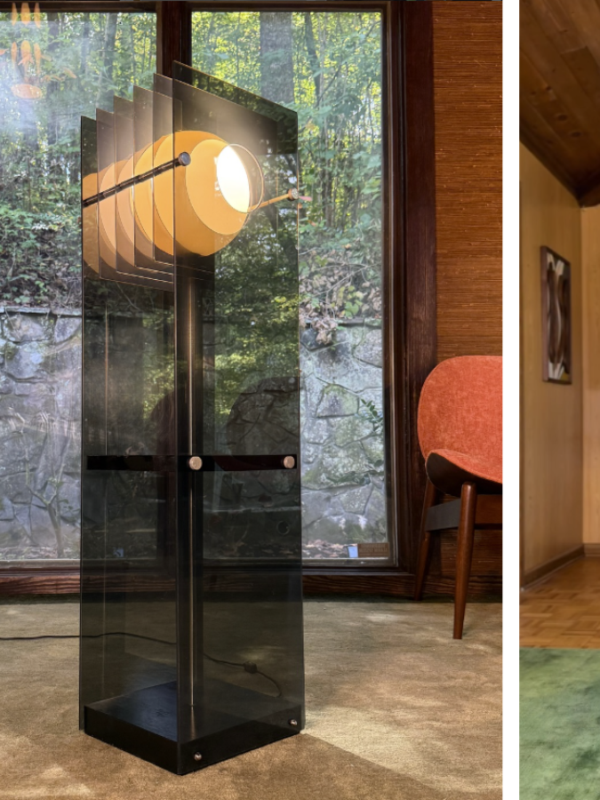Mark Schumacher, a furniture industry insider and contributor to sister publication Home News Now, spoke with Billy Lindler, president & CEO of USSI – a firm that provides engineering consulting and warehouse solutions – to discuss ways that retailers can use current conditions to better their business.
Tariffs are not the only topic of concern to retailers, according to Lindler. “Everyone’s talking about tariffs, but there is also a lot of business uncertainty. It’s a tough environment for capital spending on new warehouses and showroom construction. And, on top of that, the cost of materials has gone up — steel has gone up 42% since January,” he noted.
What are some key things that retailers should be paying attention to right now? For one, pay closer attention to what is in your warehouse. Use the slowdown in showroom activity to evaluate exactly what you have in your warehouse and consider re-engineering the processes you don’t have time for when you are busy.
“We’re working with one client whose strategy was to have a backroom warehouse at every showroom, but now they’re thinking, ‘Hey, we don’t need two trucks at every showroom for the three or four deliveries we make each day. Let’s have more centralization, fewer vehicles, and less handling of product and use this situation as an opportunity to get more efficient.’ That lower tide in the marketplace shows where the rocks are and where we can, operationally, make some improvement,” Lindler explained.
Hit the warehouse
Whether you are a single showroom or have multiple stores, it’s time to go into your backroom and look at how you are utilizing that space.
“Another retailer we work with is looking at their inventory and determining what isn’t saleable,” Lindler advised. “Maybe that means you have two pieces of a sectional sofa, but you don’t have the other pieces. Or you have the nightstand, but none of the other pieces in the bedroom set. Or you have product that isn’t on display anywhere, and so it’s not going to move out of the warehouse because the customer doesn’t see it in the showroom.”
According to Lindler, it’s a good time to perform more intensive inventory management. “Some retailers are getting very analytical. There is a lot of talk about AI, but this step involves straight-up business intelligence of looking at your best sellers and making intentional purchase decisions that drive the inventory on-hand,” he stated.
Buying patterns have changed
Schumacher pointed out that over the past several years, the flow through the warehouse has been hard to predict because retailers went from feast to famine in inventory levels. Now that there is more sluggish movement through that warehouse, it’s a good time to re-evaluate.
“We see some manufacturers – like Surya in Atlanta with a really big warehouse – offer direct shipment,” Lindler said, adding, “And so we’re seeing some retailers play into this and ask whether this is okay. That provides a whole other customer experience conversation. How can I fulfill my customers’ needs in a good way, but perhaps remove the burden of owning the inventory and the unnecessary handling of the inventory? Because the more we touch it, the more times we can break it.”
Tariffs have also caused retailers and manufacturers to rethink where they are sourcing from, which adds another level of complexity, Schumacher observed.
“I was just talking to a retailer that, as we’re moving into the summer season, has a variety of patio products like grills and such. In anticipation of all of the tariffs, several of our customers’ buyers bought significantly more than they would normally,” Lindler said. “So we’ve seen a flood of seasonal merchandise now and hopefully retailers can turn it all because they’re going to be holding it for more than a normal period of time.”
Another concern for retailers in the age of tariffs is to consider changing their suppliers to ones that source from countries with less tariffs and ones with significant distribution in the U.S. “When you do that, there will be changes in lead times,” Schumacher cautioned. “It’s not just changing your vendors, but factoring in what that does to your timeline.”
Where to go for advice
Which tools does Lindler suggest for retailers who would like assistance with the evaluation process and inventory management?
“Use AI and ask ChatGPT or Co-pilot or another program questions for your specific situation, such as, ‘I’m a three-store retailer with this XYZ assortment of product, what should I be doing?’ It’s amazing what you will get in response to that, but it really depends on the size of your business and the specific problem that you have,” Lindler noted. “We all have technology that’s right underneath our noses and available on our laptops today that we’re not fully utilizing. We’re creatures of habit and we all use Excel or Outlook in a little bit different way [from one another],” he added. “I have a friend that I’ve made through a CEO network and he spends one hour every Saturday studying AI. He’s one of the most knowledgeable people I know, and he’s made that intentional effort to say AI is here right now, and we have to figure out how to use it.”
To see the interview in its entirety, watch the 10-minute video here




